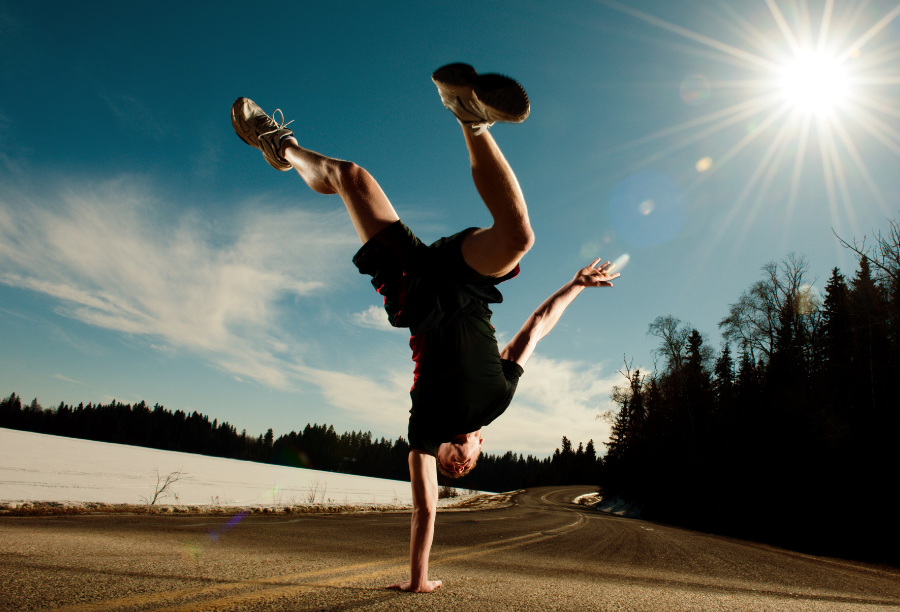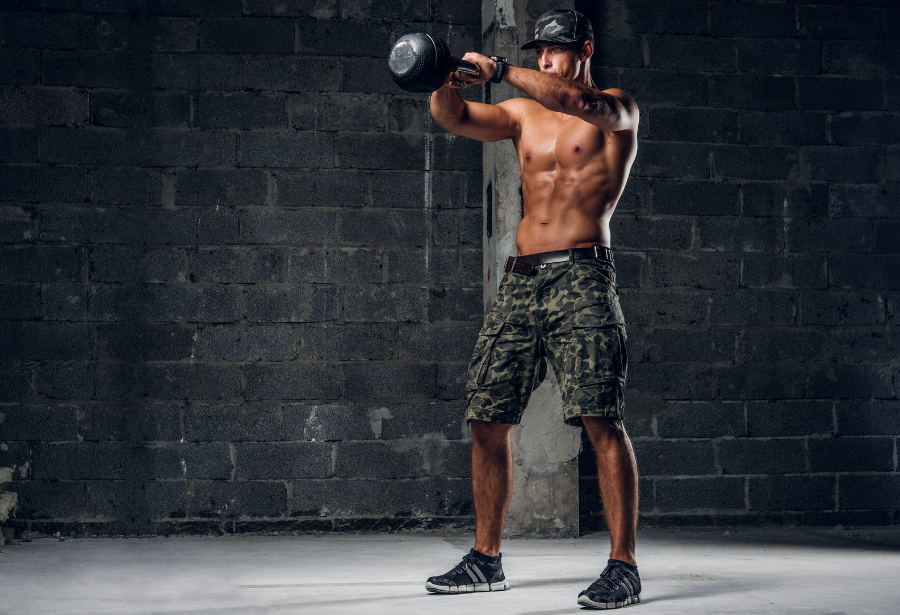Introduction

Overview of the Handstand
Learn how to do a handstand with one hand is a fundamental gymnastic skill where an individual balances on their hands, with the body inverted and the feet pointing upwards. This exercise is not only a staple in gymnastics but also a popular feat in yoga, calisthenics, and various fitness disciplines.
Importance of Handstands in Fitness and Gymnastics
Handstands are crucial for building upper body strength, enhancing balance, and developing body control. They are a gateway to more advanced gymnastic skills and provide a comprehensive workout for the shoulders, arms, and core muscles. In fitness routines, handstands serve as a dynamic exercise to improve overall body coordination and strength.
Evolution of Handstands in Sports
Historically, handstands have been a part of acrobatic and gymnastic performances for centuries. Over time, the skill has evolved, incorporating various styles and techniques, such as the one-hand handstand, which demonstrates exceptional balance and strength. Today, handstands are not only performed in professional sports but are also popular among fitness enthusiasts and in competitive disciplines.
Types and Categories of Handstands
Basic Handstand

The foundational skill where the practitioner balances on both hands, maintaining a straight body line.
One-Hand Handstand

An advanced variation where the individual supports their entire body weight on a single hand, requiring exceptional balance and strength.
Press Handstand
A handstand achieved by lifting the body into position from a standing or seated start, rather than kicking up.
Walking Handstand

A dynamic form of handstand where the practitioner moves their hands to walk while maintaining the inverted position.
Straddle Handstand
A variation with legs spread wide apart, offering a different balance challenge and aesthetic.
Pike Handstand
Performed with the legs together and bent at the hips, creating a pike shape with the body.
Benefits of Doing Handstands
Physical Strength

Handstands significantly enhance the strength of the upper body, particularly the shoulders, arms, and core. The isometric nature of holding a handstand builds endurance in these muscle groups.
Balance and Coordination
Balancing in a handstand requires fine control and coordination, engaging various stabilizing muscles and improving overall body awareness.
Mental Focus
Achieving and maintaining a handstand demands concentration and mental clarity, contributing to better focus and cognitive function.
Cardiovascular Health

The inversion during a handstand promotes blood circulation, aiding cardiovascular health and providing a unique way to improve heart function.
Flexibility

Practicing handstands improves flexibility in the shoulders, wrists, and hips, which is beneficial for overall mobility and physical performance.
Prerequisites for One-Hand Handstand
Physical Requirements
Before attempting a one-hand handstand, one must have a solid foundation in basic handstands, strong upper body and core muscles, and excellent balance.
Mental Preparation
Mental readiness is crucial. Confidence, determination, and a positive mindset help overcome the challenges of learning this advanced skill.
Safety Measures
Practicing in a safe environment, such as using a padded surface or having a spotter, minimizes the risk of injury. Proper warm-up and stretching routines are also essential to prevent strains and sprains.
Preparatory Exercises
Wrist and Finger Strengthening
Exercises like wrist curls, finger push-ups, and wrist rotations help build the necessary strength and flexibility for supporting body weight on one hand.
Shoulder and Core Conditioning
Strengthening the shoulders and core is vital. Incorporate exercises like shoulder presses, planks, and hollow holds to build the required stability and power.
Balance Drills
Practicing balance drills, such as standing on one foot or using a balance board, enhances proprioception and coordination, which are crucial for maintaining a handstand.
Flexibility Training
Regular stretching of the shoulders, wrists, and hips improves flexibility, making it easier to achieve the correct handstand position and reduce the risk of injury.
Step-by-Step Guide to Mastering the Basic Handstand
Finding a Suitable Practice Area
Choose a spacious, flat area with a padded surface. A gym or a grassy field can provide a safe environment for practice.
Warm-Up Routine
A thorough warm-up, including dynamic stretches and light cardio, prepares the muscles and joints for the physical demands of handstands.
Learning the Kick-Up
The kick-up is the method used to get into a handstand. Practice by placing hands on the ground, kicking one leg up, and then following with the other, aiming to balance in an inverted position.
Holding the Handstand Position
Once in the handstand, focus on maintaining a straight body line. Engage the core, keep the arms straight, and point the toes upwards.
Building Endurance
Practice holding the handstand for increasing durations. Start with a few seconds and gradually extend the time as balance and strength improve.
Progression from Basic to One-Hand Handstand
Mastering the Basic Handstand
Ensure proficiency in the basic handstand before attempting more advanced variations. Consistent practice is key to developing the necessary control and strength.
Transitioning to Finger Tip Support
Begin by lifting one hand slightly, supporting the body with fingertips. This intermediate step helps in transitioning weight and improving balance.
Shifting Weight Gradually
Gradually shift more weight onto one hand, lifting the other hand higher off the ground over time. This slow progression builds the confidence and strength needed for a one-hand handstand.
Removing One Hand
Once comfortable with weight shifting, practice removing one hand completely. Start with brief holds, gradually increasing duration as stability improves.
Detailed Steps for Performing a One-Hand Handstand
Establishing a Strong Base
Start with a solid handstand foundation. Place the supporting hand firmly on the ground, fingers spread wide for better grip and stability.
Perfecting Hand Placement
Ensure the hand is directly under the shoulder, providing optimal support. Slight adjustments may be needed to find the perfect balance point.
Engaging the Core and Shoulders
Engage the core muscles to maintain a straight body line. Activate the shoulder muscles to support the body weight and prevent collapsing.
Balancing Techniques
Use small finger and hand adjustments to maintain balance. Focus on a fixed point to help with stability and avoid overcorrecting movements.
Common Mistakes and How to Avoid Them
Improper Hand Placement
Incorrect hand placement can lead to instability. Ensure the hand is placed directly under the shoulder and fingers are spread for maximum support.
Lack of Core Engagement
A weak core can cause the body to bend or collapse. Focus on engaging the core muscles to maintain a straight line from head to toes.
Overarching the Back
Avoid overarching the back by keeping the ribs pulled in and the body aligned. This reduces strain on the lower back and improves balance.
Inadequate Warm-Up
Skipping the warm-up increases the risk of injury. Always start with a thorough warm-up to prepare the muscles and joints for the demands of handstands.
Advanced Techniques and Variations
One-Hand Handstand Push-Ups
An advanced exercise that combines strength and balance, involving lowering and raising the body while in a one-hand handstand position.
One-Hand Handstand Walking
Walking on hands while maintaining a one-hand balance, adding dynamic movement to the skill.
Handstand Press to One-Hand
A combination of pressing into a handstand and transitioning to a one-hand balance, showcasing advanced strength and control.
Combining with Other Gymnastic Moves
Incorporating the one-hand handstand into routines with other gymnastic skills, such as flips or spins, for a comprehensive display of agility and strength.
Training Plan for Beginners
Weekly Training Schedule
Create a balanced training schedule that includes handstand practice, strength training, and flexibility exercises. Dedicate specific days for handstand work to ensure consistent progress.
Setting Realistic Goals
Set achievable short-term and long-term goals. Track progress and celebrate milestones to stay motivated.
Tracking Progress
Maintain a training journal to record practice sessions, improvements, and areas needing attention. Regularly review and adjust the training plan as needed.
Nutrition and Recovery
Diet for Strength and Endurance
A balanced diet rich in protein, healthy fats, and complex carbohydrates supports muscle growth and endurance. Include a variety of fruits, vegetables, and lean proteins in your meals.
Importance of Hydration
Staying hydrated is crucial for muscle function and recovery. Drink plenty of water throughout the day, especially before and after workouts.
Recovery Techniques
Incorporate recovery techniques like stretching, foam rolling, and massage to alleviate muscle soreness and prevent injury. Adequate rest is also essential for recovery and performance.
Dealing with Soreness and Injuries
Listen to your body and address any pain or discomfort promptly. Rest, ice, and proper medical attention help manage injuries and facilitate healing.
FAQs
How long does it take to learn a one-hand handstand?
The time required varies based on individual fitness levels, training frequency, and dedication. It can take several months to years to master the one-hand handstand.
Can anyone learn a one-hand handstand?
With proper training, dedication, and patience, most individuals can learn to perform a one-hand handstand. Starting with a strong foundation in basic handstands is essential.
What are the risks associated with one-hand handstands?
The primary risks include wrist, shoulder, and back injuries. Practicing proper form, warming up adequately, and training in a safe environment help mitigate these risks.
How often should I practice to improve?
Consistency is key. Aim for regular practice, at least 3-4 times a week, to build strength, balance, and muscle memory.
Conclusion
Summary of Key Points
Mastering a one-hand handstand is a challenging yet rewarding goal that requires strength, balance, and dedication. Starting with a solid foundation in basic handstands, progressing through preparatory exercises, and consistently practicing are crucial steps to success.
Encouragement for Continued Practice
Stay motivated and patient. Progress may be slow, but with perseverance and the right training plan, achieving a one-hand handstand is possible.
Call to Action for Further Learning
Continue exploring advanced techniques and variations, seek professional guidance, and keep challenging yourself to improve. The journey to mastering a one-hand handstand is ongoing, and there is always more to learn and achieve.




